Cholesterol often has a negative reputation, but it plays essential roles in the body, including hormone production, vitamin D synthesis, and cell structure. While it is helpful in many ways, cholesterol levels that are too high can increase the risk of conditions like heart disease and atherosclerosis.
Genetics can impact cholesterol levels, but lifestyle changes, including following a low-cholesterol diet, can effectively reduce them. While a low-cholesterol diet does involve limiting certain foods, it is also about making strategic choices to support your heart health. Keep reading to discover everything you need to know about this eating method in our complete guide.
Types of cholesterol

Cholesterol is naturally produced in the liver. There are several different types or classifications of cholesterol based on the characteristics of the molecules, but there are two primary types. Low-density lipoprotein (LDL) cholesterol is often referred to as “bad cholesterol.” High-density lipoprotein (HDL) cholesterol is considered the “good” cholesterol.
HDL cholesterol actually helps remove excess LDL cholesterol from the bloodstream. High LDL cholesterol levels increase the risk of atherosclerosis, or arterial hardening and plaque buildup, along with heart disease and other vascular diseases.
What is a low-cholesterol diet?
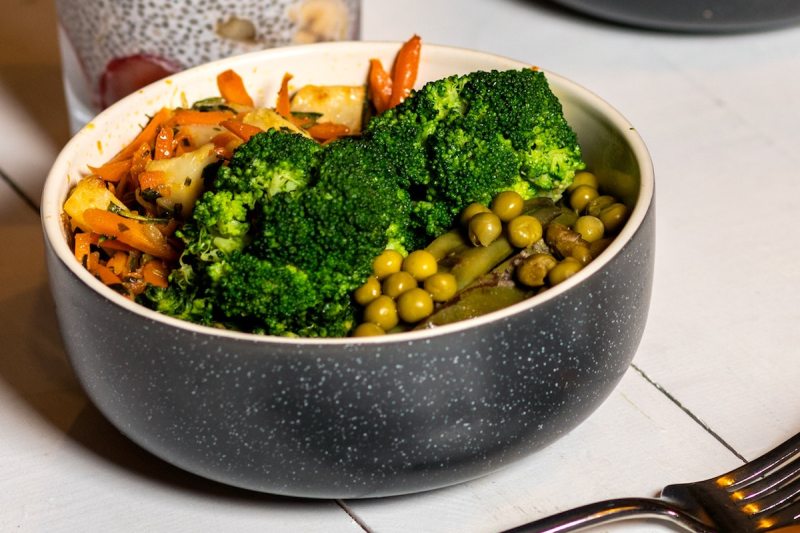
The term “low-cholesterol diet” can be a bit misleading because it sounds like a diet that is low in dietary cholesterol or that eliminates foods that contain cholesterol. However, while high-cholesterol foods like red meat, cheese, eggs, full-fat dairy, butter, snack cakes, ice cream, shellfish, commercially fried foods, and organ meats are to be avoided on a low-cholesterol diet, the real dietary culprits in terms of elevated cholesterol levels are actually trans fats and saturated fats.
Accordingly, a low-cholesterol diet eliminates all trans fats and avoids as much saturated fat as possible. Lastly, sugar should also be limited — particularly corn syrup and added sugars — as excessive sugar can be converted to triglycerides.
Although there are no hard-and-fast rules when it comes to the rules of a low-cholesterol diet, most low-cholesterol diets limit total cholesterol intake to 200 milligrams (mg) per day, ban all trans fats, and limit saturated fat intake to a maximum of seven percent of total daily caloric intake.
For example, on a 2,000-calorie diet, you should consume no more than 14 calories of saturated fat or about 15 grams. Emphasis should be on eating whole, natural foods and getting 30 minutes of moderate-intensity exercise most days of the week.
Benefits of a low-cholesterol diet
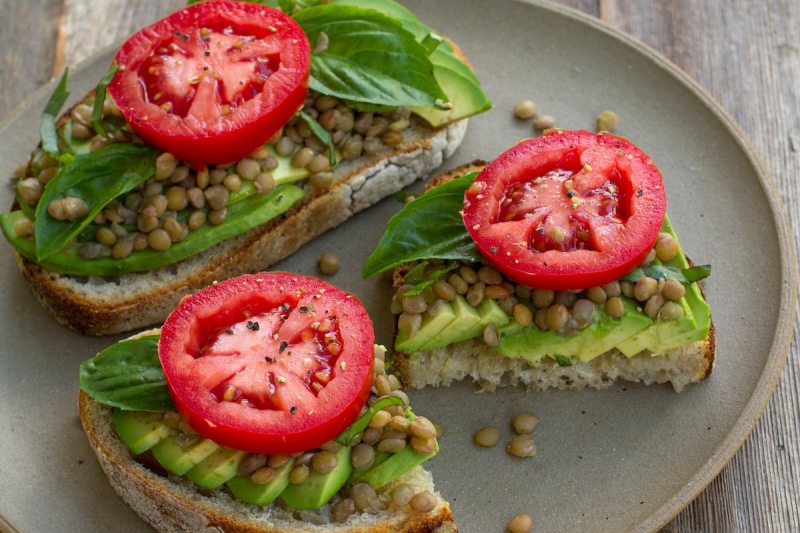
Because high cholesterol can increase the risk of atherosclerosis and heart disease, following a low-cholesterol diet can result in the following benefits:
- Reduced total cholesterol
- Reduced LDL cholesterol
- Weight loss
- Decreased risk of heart attack and stroke
- Improved diet quality
- Increased HDL cholesterol, particularly when the diet is paired with exercise
Foods to avoid on a low-cholesterol diet
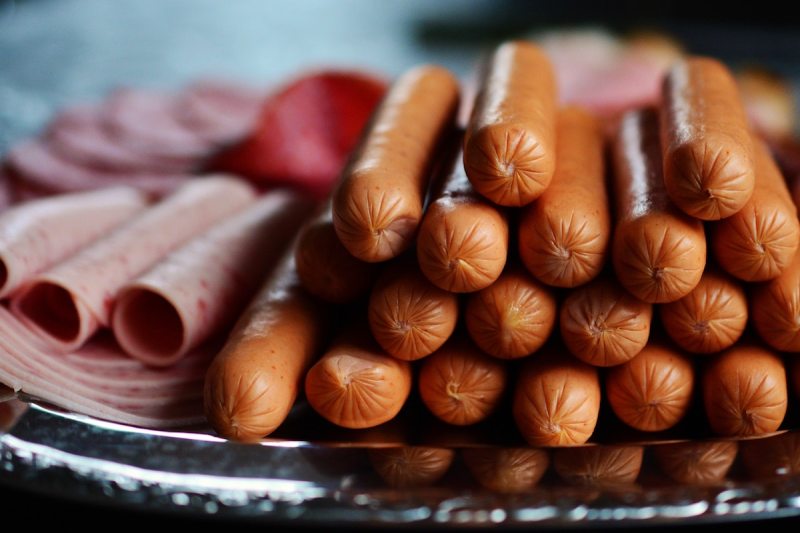
Because trans fats and saturated fats are associated with increased LDL cholesterol levels, and excessive cholesterol intake also seems to contribute to the issue, these should be limited. Note that trans fats are hydrogenated oils added to foods to improve stability, and saturated fats are solid at room temperature and are mostly found in animal products. The following foods are particularly high in trans fat, saturated fat, and/or cholesterol and should be avoided on a low-cholesterol diet:
- Fast food: Burgers, anything fried, French fries, breakfast sandwiches with sausage, donuts, chicken nuggets, pizza, fast food Chinese, tacos, onion rings, etc.
- Snacks: Breaded snacks, pork rinds, combos, potato chips, Jiffy pop, tater tots, packaged cookies, toaster pastries, candy, white chocolate, milk chocolate, anything with icing or frosting, pepperoni, cheese dip, etc.
- Processed meats: Lunch meats and cold cuts, sausage, bacon, hot dogs, etc.
- Meat/some shellfish: Lean cuts are OK, but avoid fatty beef, veal, lamb, pork, lobster, and shrimp.
- Frozen dinners: Frozen pizza, frozen entrees, frozen prepared lasagna, frozen Chinese food dishes, frozen pot pies, etc.
- Full-fat dairy products: Cream, whole milk, 2% milk, cheese, sour cream, buttermilk, ice cream, gelato, creamer, pudding, half and half, etc.
- Certain bread products: Canned and prepared biscuits and croissants, pies, donuts, muffins, snack cakes, cakes, cookies, prepared granolas with oils, Danishes, tortillas, sweetened cereals, etc.
- Sauces and condiments: Mayo, creamy salad dressings, any salad dressing with hydrogenated oils, gravy, sweetened jellies and jams, chocolate syrup, pancake syrup, etc.
- Beverages: Eggnog, full-fat coconut milk, chocolate milk, shakes, juices, soda, etc.
- Restaurant foods: Ribs, fatty cuts of pork or beef, burgers, steaks, fried appetizers, etc.
- Fats and oils: Butter, margarine, olio, lard, shortening, bacon fat, coconut oil, etc.
- Sugary foods: Avoid any sweets or sugary foods as much as possible because excess sugar can get converted to triglycerides.
Foods to eat on a low-cholesterol diet
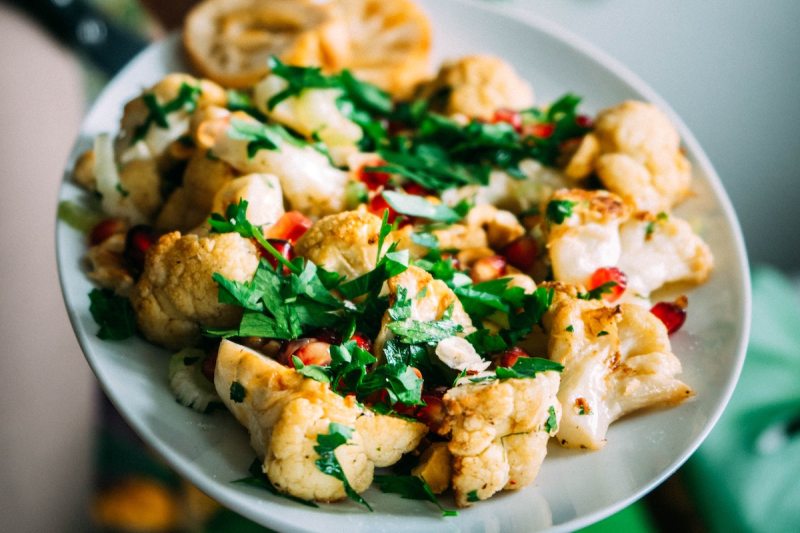
A low-cholesterol diet should include as many whole, unprocessed, healthy foods like vegetables, fruits, lean proteins, legumes, low-fat dairy, and seeds as possible. Unsaturated oils like olive oil and avocado oil should be used instead of saturated fat or canola oil. Nuts and seeds may help raise good HDL levels, and even though eggs contain cholesterol, there is evidence to suggest they will not negatively impact your cholesterol levels. That said, limit egg yolks to two to three per week, but enjoy egg whites as much as you’d like.
The following are foods to eat on a low-cholesterol diet:
- Vegetables: Fresh or frozen kale, spinach, carrots, lettuce, Swiss chard, broccoli, zucchini, cucumbers, onions, cauliflower, asparagus, sweet potatoes, beets, squash, onions, etc. Avoid canned vegetables in cream sauces like creamed spinach or creamed corn.
- Fruits: Pears, apples, melons, oranges, grapefruit, plums, apricots, peaches, berries, bananas, pomegranates, kiwis, tomatoes, kumquats, etc.
- Whole grains and bread products: Whole, unprocessed oats, whole wheat, barley, brown rice, quinoa, teff, farro, etc.; pasta, bread, oatmeal, healthy cereals, etc.
- Lean meats, poultry, and fish: Fresh or frozen lean beef, bison, venison, chicken, turkey, salmon, scallops, tofu, halibut, cod, etc.
- Low-fat dairy products: Skim milk, 1% milk, low-fat yogurt, cottage cheese, eggs, low-fat cheese, etc.
- Legumes: Dry or canned beans, lentils, peas, peanuts, soy, etc.
- Nuts and seeds: Almonds, pecans, pistachios, walnuts, cashews, pecans, chia seeds, flax seeds, pumpkin seeds, sesame seeds, hemp seeds, sunflower seeds, macadamia nuts, Brazil nuts, etc.
- Fats and oils: Olive oil, avocados, flaxseed oil, etc.
- Herbs and spices: Basil, thyme, pepper, cinnamon, clove, nutmeg, ginger, rosemary, cumin, chili powder, etc.
- Beverages: Water, tea (herbal tea, green tea, black tea, etc.), red wine, coffee.
Sample low-cholesterol diet meal plan
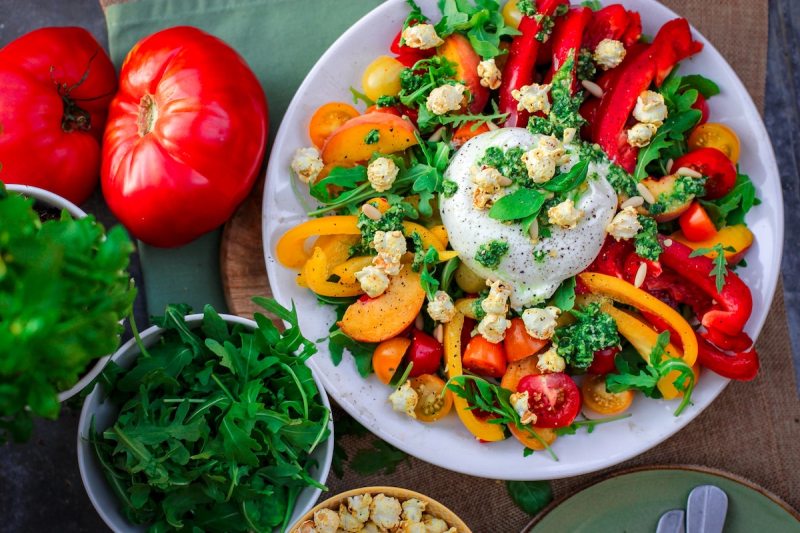
Curious about what a day of eating might look like on a low-cholesterol diet?
- Breakfast: Greens smoothie made with banana, spinach, almond butter, fat-free Greek yogurt, frozen blueberries, and chia seeds
- Lunch: Veggie burger on a whole-grain bun topped with lettuce, tomato, and onion. Snap peas on the side.
- Snack: Hummus with carrots, cucumbers, pepper strips, and celery.
- Dinner: Miso marinated salmon, roasted Brussels sprouts, and brown rice. Side salad with lemon juice.
- Snack: Fat-free Greek yogurt with berries, flax seeds, and walnuts.
Frequently asked questions

Does eating fiber help with lowering cholesterol levels?
Yes, fiber can help. If you consistently consume 10 to 25 grams of soluble fiber daily, the fiber can help prevent your digestive system from absorbing cholesterol. Foods high in soluble fiber include apples, beans, carrots, barley, peas, and oats. There are also supplements like psyllium husk, which can make increasing your fiber intake a bit easier.
Does alcohol affect your cholesterol?
Regularly overconsuming alcohol can have many adverse effects on the body, including raising cholesterol levels. Drinking often also increases your caloric intake, which can result in gaining excess weight. When this happens, your body is at risk of higher LDL levels and lower HDL levels. So, if keeping your cholesterol levels low is a priority, adhere to the recommendation for men of two or fewer drinks daily.




